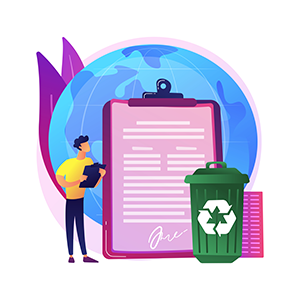Solid Waste Management
About 70% of solid waste produced by Indonesians each year is sent to open dumpsites, which has a negative effect on the health of environment and local communities.
In response, the Government of Indonesia committed to develop a comprehensive strategy to improve policy and institutional capacity for waste management at local level; enhancing management capacity of urban waste; reducing landfill waste by promoting 3Rs (Reduce, Reuse, Recycle) and turning waste into energy.
In March 2019, the Government of Indonesia released its ambitious national plan for waste management with goal of reducing marine plastic debris by 70% and solid waste by 30%. The initiative is part of Global Plastic Action Partnership which uses an innovative, analytical model for data-driven decision making that estimates the investment needed, timeline, environmental footprint and greenhouse gases emissions as well as the impact of project on people’s lives.

Example of Potential GII Investments
- Waste collection with recovery of recyclable materials including reduction, segregation at source and use of transfer stations.
- Flood protection and rehabilitation of existing landfills.
- Establishment of sanitary or controlled landfills.
- Environmentally sound collection and treatment of landfill leachates.
- Mechanical-biological waste treatment with production of substitute fuels from high-calorific fractions for co-incineration, for example in cement plants.
- Establishment of waste sorting plants or material recovery facilities (MRF) for the production and marketing of separate recyclable material fractions.
- Waste-to-Energy, such as incineration plants for larger cities or densely populated areas after separation of low calorific value waste fractions; and collection of landfill gas and use for energy (electricity) generation.
 English
English Indonesia
Indonesia